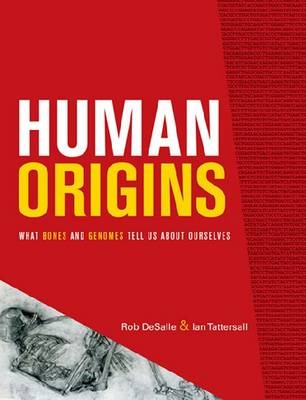
Human Origins
Texas A & M University Press (Verlag)
978-1-60344-518-4 (ISBN)
Even as paleoanthropologists continued to make important discoveries—Mary Leakey’s Nutcracker Man in 1959, Don Johanson’s Lucy in 1974, and most recently Martin Pickford’s Millennium Man, to name just a few—experts in genetics were looking at the human species from a very different angle. In 1953 James Watson and Francis Crick first saw the double helix structure of DNA, the basic building block of all life. In the 1970s it was shown that humans share 98.7% of their genes with the great apes—that in fact genetically we are more closely related to chimpanzees than chimpanzees are to gorillas. And most recently the entire human genome has been mapped—we now know where each of the genes on the chromosomes that make up DNA is located on the double helix.
In Human Origins: What Bones and Genomes Tell Us about Ourselves, two of the world’s foremost scientists, geneticist Rob DeSalle and paleoanthropologist Ian Tattersall, show how research into the human genome confirms what fossil bones have told us about human origins. This unprecedented integration of the fossil and genomic records provides the most complete understanding possible of humanity’s place in nature, its emergence from the rest of the living world, and the evolutionary processes that have molded human populations to be what they are today.
Human Origins serves as a companion volume to the American Museum of Natural History’s new permanent exhibit, as well as standing alone as an accessible overview of recent insights into what it means to be human.
Ron DeSalle is a curator at the American Museum of Natural History in the Sackler Institute for Comparative Genomics. He curated the American Museum of Natural History's new Hall of Human Origins (2006) and has written more than 300 peer-reviewed scientific publications and several books. Tattersall and DeSalle recently coauthored Human Origins: What Bones and Genomes Tell Us about Ourselves (Texas A&M University Press, 2007). Ian Tattersall, curator emeritus in the American Museum of Natural History, is also the author of Paleontology: A Brief History of Life (Templeton Press, 2010), The Fossil Trail: How We Know What We Think We Know about Human Evolution (Oxford University Press, 2009), and The World from Beginnings to 4000 BCE (Oxford University Press, 2008)
| Zusatzinfo | 113 colour illustrations |
|---|---|
| Verlagsort | College Station |
| Sprache | englisch |
| Gewicht | 660 g |
| Themenwelt | Sachbuch/Ratgeber ► Natur / Technik ► Natur / Ökologie |
| Naturwissenschaften ► Biologie ► Evolution | |
| Naturwissenschaften ► Biologie ► Humanbiologie | |
| Sozialwissenschaften ► Ethnologie | |
| Sozialwissenschaften ► Soziologie | |
| ISBN-10 | 1-60344-518-8 / 1603445188 |
| ISBN-13 | 978-1-60344-518-4 / 9781603445184 |
| Zustand | Neuware |
| Haben Sie eine Frage zum Produkt? |
aus dem Bereich


